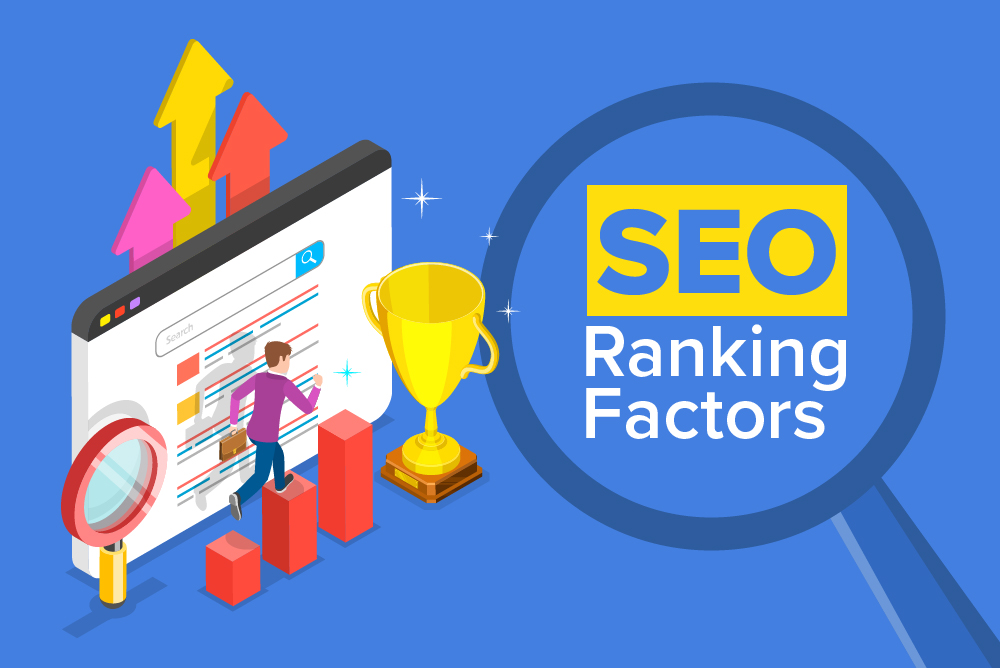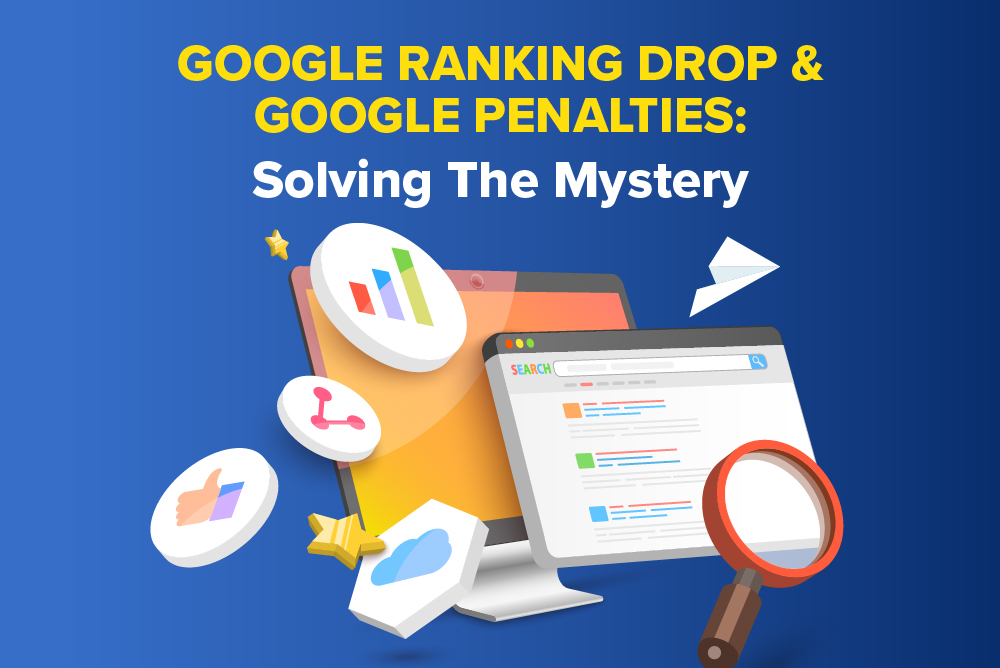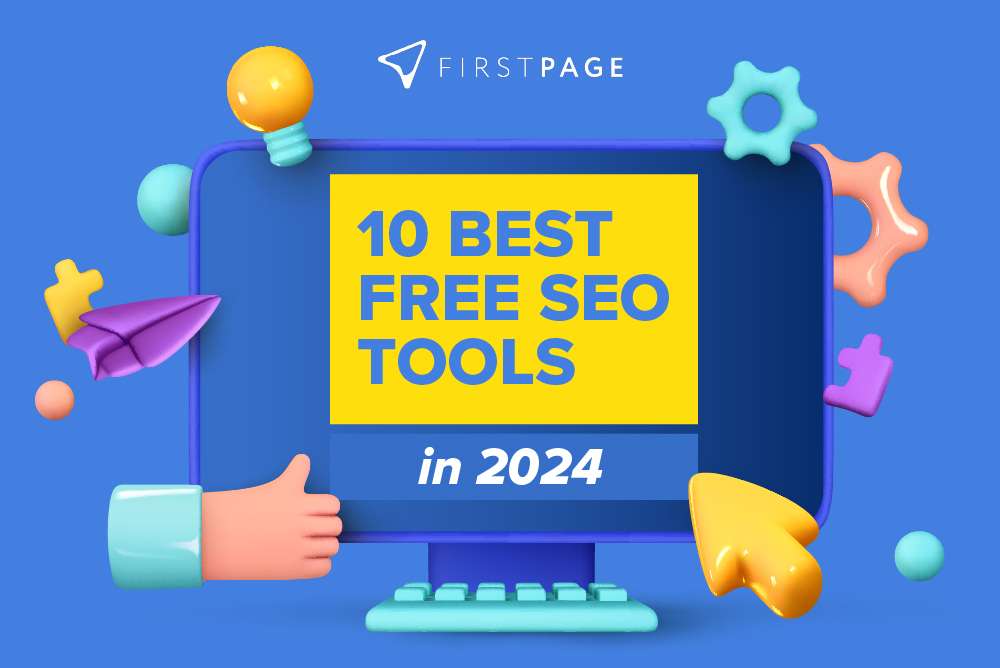Search Engine Optimisation (SEO) can be an absolute black box and a game of chance to the newcomer. Do a quick search on Google about SEO or enter any SEO forum, and you will find a never-ending list of must-do actions. With so many suggestions online, you might easily fall into the trap of wasting effort on non-ranking factors.
This is where our myth-busting list of SEO Ranking Factors comes in. We have collated commonly promoted SEO ranking factors, backed by professional input from our SEO agency team.
To make things easier, each SEO ranking factor is also sorted into (1) non-ranking signal, (2) indirect ranking signal, and (3) direct ranking signal.
Title Tag
The title tag of your page is found in the <head> section and often serves as the title that appears on Google search snippets. Oftentimes, marketers try to include their main keyword in the title tag to signal to Google about the relevance of the page.
Verdict: Direct ranking signal
The title tag is one of the most important components of your website’s SEO. Simply put, it serves as a key indicator of what your page is about. Having keywords in it is thus a great way to signal relevance to Googlebot. At the same time, since users often see your title tag on the SERP, it can play a big part in getting more clicks.
Meta Description Tag
A meta description tag is a short piece of text that appears below the title on your SERP snippet. The purpose here is to help users decide whether they want to click through to your webpage. Your meta description tag will have to either describe the content of the page and/or promote the value of the page to the user.
Verdict: Direct ranking signal
Similar to the title tag, the meta description can be viewed as a brief summary of the page. As such, placing keywords in them helps to signal relevance to Google. However, we caution against stuffing keywords in your meta description as this leads to poorer rankings. At the same time, any persuasive messages or offers used here can entice click-throughs and thus provide better value.
Meta Keywords Tag
Meta keywords can be inserted in the <head> of your page alongside your meta title and description. The meta keyword tag should contain one or two words that describe your website’s main purpose. For example, if you sell shoes online, then “buy shoes online” would be a good choice for your meta keyword. This helps search engine spiders understand what your website is about.
Verdict: Non-ranking signal
After years of abuse by marketers to push rankings for unrelated search terms, take note that Googlebot now disregards this input completely. In fact, Google has ignored the meta keywords tag for years and is unlikely to reverse course anytime soon.
Heading Tags
SEOs often use H1/H2/H3/H4 tags to help better organise content on the page. As section headers, these tags help users to find the content that they need and make the content readable as a whole. As for search engine bots, the heading tags are granted a bigger weightage as compared to plain text. To take advantage of this significance, SEOs often include their keywords within the headers.
Verdict: Direct ranking signal
Google has confirmed that heading tags carry a higher weight than regular text and thus is a Google ranking factor. As such, heading tags are a key component of SEO and including keywords in them will help to improve your rankings. Bear in mind that stuffing keywords in headings is not recommended as it can lead to a poor user experience.
Domain Age
The age of a domain name has constantly been a topic of hot debate amongst the SEO community. The argument follows that Googlebot views aged domains as being more trustworthy. As such, keywords tend to rank easier and quicker on domains with years under their belt. It is no wonder then that aged domains are constantly in hot demand and can command large sums when an attempt to acquire one is made.
Verdict: Indirect ranking signal
We do not believe that the age of a domain alone lends a website the edge when ranking for keywords. For instance, if you have owned a seasoned domain for five years but have not created any pages or content on it, then it would not have been indexed and gained authority during this time. As such, the domain age then provides little to no value.
Yet, if a seasoned domain has had content and traffic going to the website for years, then certainly the domain has earned the trust of Google. In this case, we could generally conclude that the age of the domain does provide indirect authority to the website.
Exact Match Domains (EMD)
An exact match domain is one where the domain name exactly matches the search query. The main advantage of having an exact match domain is that it clearly signals the intent of the content to both users and search bots. For certain niche industries, it is not uncommon for an SEO competitor analysis on the SERPs to reveal that nearly all ranking websites have EMDs.
Verdict: Direct ranking signal
Taking a look at the SERPs, it becomes clear that an EMD does do well for SEO. However, it should be noted that there was an algorithm update that actively punishes low-quality exact-match domains. As such, before actively sourcing for an EMD, it is important to check the domain for any past spam or irrelevant content.
Domain History
Many webmasters whose websites have not ranked well on Google’s SERPs have at one point suspected that their domain’s history could be the culprit. This is due to the possibility of their newly acquired domain having had penalties from search engines. For instance, if the domain used to have content that is not search engine friendly, then the same penalties on it from before may still be in place now.
Verdict: Direct ranking signal
Any business owner looking to acquire a domain should do the due diligence, and perform a domain history check. This includes looking for domains associated with spam and adult content. Based on case studies from SEO experts, we can infer that search engine penalties tend to last a long time. As such, chances are that domains with the issues mentioned above will directly harm your chances of ranking your website.
Website Hosting
Your website hosting package can have an impact on your website’s user experience. Lower-end hosting packages have lower bandwidth which, in turn, leads to slower page load times and possibly fewer users who can access your website at once. If your site takes forever to load, a poor user experience might lead to worse rankings.
Verdict: Indirect ranking signal
A good hosting plan can help to boost your website’s Core Web Vitals (CWV) scores which, in turn, helps to boost your SEO rankings. Having said that, Google does not necessarily penalise your website for not having strong hosting. Simply put, website hosting can help to improve your CWV scores but is not assessed in isolation by Google.
Internal Links
Internal links connect pages within your website, assisting users to navigate through it. This also applies to search engine bots which rely on internal links to find pages on your website. At the same time, they help Googlebot to understand the relationship between pages.
Verdict: Direct ranking signal
Internal linking is a key component of SEO because it allows Google to crawl and index all pages on your site. If you link to another page on your own website, it means that Google knows there is a connection between the two pages.
Google takes internal links very seriously and uses them to determine how relevant a particular webpage is. For instance, if a particular page has many internal links flowing to it, it is seen as being more important or authoritative.
Duplicate Content (Internal)
When a webmaster creates duplicate content, they are essentially creating multiple versions of the same webpage. Duplication can occur due to poor coding practices, poor design, or simply because the webmaster wants to create several variations of the same page. These duplicates can also often be found on different subdomains of the site.
Verdict: Indirect Ranking Signal
Any consequence of having duplicate content on your website can be broken down into three different scenarios.
Firstly, if the intent of the duplicate content is determined to be a manipulation of search engines, a penalty may be placed as a result.
Secondly, duplicate content can also be harmful to your website’s SEO rankings as it confuses search engine bots about the value of each individual page. In this case, you might observe varying pages on the SERP for a given keyword.
Thirdly, having duplicate content leads to inefficient crawling of your website by Googlebot. In this case, there are fewer resources devoted to your high-value content.
Bounce Rates
A bounce rate is the percentage of visitors who leave your website after viewing just one page. It is calculated by dividing the number of visits to a specific page by the total number of visits to that page. A lower average bounce rate indicates that people are staying longer on your website.
Verdict: Non-ranking signal
Google has confirmed that they do not use average bounce rates as an SEO ranking factor. This makes sense due to the nature of this metric not necessarily lining up with the intent of the page. For instance, a page that immediately gives users the answer they seek at the top of the page is more likely to record a bounce despite fully meeting the needs of the user.
Having said that, bounce rates tend to correlate with poor content or design issues. As such, if your page has high bounce rates and a low average time on the page, then it is worth further analysis.
Social Signals
Social signals include likes, shares, and link clicks from social media platforms. The idea behind these metrics is to provide insight into the popularity of your website. An interesting dynamic appears here as it affords you the opportunity to boost your website’s SEO based on popularity on other platforms.
Verdict: Direct ranking signal
Social signals have been shown to impact SEO rankings in a big way. In past SEO campaigns that we have done for clients with new domains, they earned better-than-expected rankings due to having a strong social presence online. For example, they effectively used giveaway contests to drum up interest in their brand and products.
Content Freshness
Content freshness refers to how recent a piece of content is. Typically, the fresher the content, the higher the chances of it ranking for the topic at hand. This encourages website owners to constantly create new relevant content to engage their audience or to even update their existing content.
Verdict: Direct ranking signal
Yes, Google’s algorithm updates and several explanations on content freshness does confirm its value as a direct ranking signal. Google uses Query Deserves Freshness (QDF) to determine which searches benefit from fresh content. In such cases, Google tries to deliver up-to-date and relevant results.
Personally, our SEO specialists have experienced success with using content freshness for better rankings. This includes providing timely content that is starting to get traction online as well as refreshing old content. Oftentimes, we experience between two to three times more page views when following this SEO strategy.
Content Length
Content length refers to the amount of words contained within a piece of text. Generally, the length of content correlates with better rankings, particularly with informational search terms. However, there is no set rule on what constitutes long content. Some websites may be able to make a case for a couple of paragraphs while others can make a case for a few pages.
Verdict: Non-ranking signal
Simply having more content does not lend to better rankings for your webpage. As such, we have to state that content length is a non-ranking signal. However, having more relevant content on your page helps to provide more context to crawlers while also answering a wider range of niche queries.
Latent Semantic Indexing (LSI)
Latent semantic indexing (LSI) is a technique that allows Google to understand the meaning of keywords and phrases by analysing the context around them. The technique involves using variations of your chosen SEO keyword that provide further context to your content. In doing so, when stacked up, search engines better understand the importance of your content to a cluster of keywords.
Verdict: Non-ranking signal
Google through John Muller has mentioned that LSI is not a part of their search algorithm. Indeed, if simply having more variations of your keywords on your page helped to move SEO rankings, then it would just be an expansion of keyword spam.
Having said that, LSI as a technique and a broader concept does have value. If you already have relevant content that answers the needs of your audience, strategically fitting in variations of your keyword can help to further emphasise how exactly your content is related to the cluster of keywords.
Rich Media Content
Rich media content is any type of multimedia content that contains audio, video, images, etc. The idea behind rich media content is to provide users with a richer user experience. It is often seen as a great way to increase engagement and drive traffic back to your site.
Verdict: Indirect ranking signal
While rich media content provides a good user experience, it does not directly affect SEO rankings. This is true in the sense that just having videos or infographics on your page will not help it to rank immediately. Instead, the actual content or information shown in your rich media is what is important here. Provided that the content here is relevant, you can further enhance your rich media through alt tags and schema markups so that search engines understand their full value.
Keyword In URL
Take a look at any SEO-optimised website and you might find page URLs that have exact match keywords in them. For instance, a plumbing company might have a page URL like /emergency-plumbing-services/ instead of just /emergency/. This is a tactic that has long been practised and is believed to signal further relevance to Googlebot.
Verdict: Direct ranking signal
Google has confirmed that having your keyword in the URL is a lightweight ranking factor. In particular, Googlebot uses terms in your URL when it discovers your page for the first time. Subsequently, once the content has been crawled and indexed, the keyword in the URL becomes less important.
Given the drop-off, is having a keyword in the URL worth the effort then? Generally, we recommend having the key term of your page in the URL as it improves the usability of your website. Additionally, if the SERP shows a clear pattern in particular terms appearing in the slug, then consider following them.
Image Alt Tags
Image alt tags help describe the image so that search engine bots can understand what the image represents. This includes the purpose of the image and how it relates to the surrounding content on the page.
Verdict: Direct ranking signal
Image alt tags can be considered a lightweight ranking signal to Google. The way to think about image alt tags is that it is an additional piece of content helping to link your image to the paragraphs before and after it. As such, consider having keywords in your alt tags while ensuring that it sticks within the current content flow.
Backlinks
Backlinks have been a cornerstone of search engine algorithms for a long time. They are essentially links pointing towards your site from other websites. Used as a proxy for trustworthiness and authority, backlinks provide a means for more quantitative comparison between web pages.
It should be noted that not all backlinks are equal. Instead, it is better to have one relevant backlink from an authoritative website as opposed to several links from non-reputable websites outside your niche. Additionally, the link equity of the linking webpage is of critical importance to determine the value of the link.
Verdict: Direct ranking signal
Google has confirmed that backlinks continue to be a major part of their search algorithm. Used as an indication of authority and trustworthiness, backlinks provide a strong proxy metric for ranking websites and are a key component to focus on in your SEO efforts. This is why though not impossible to find, it is difficult to have a website that ranks despite having a poor backlink profile.
Backlink Anchor Text
While backlinks have been confirmed to be a direct ranking factor for SEO, you should also consider their anchor text. A link’s anchor text is the visible text on a page that houses the link to another page. From a user standpoint, the anchor text indicates what the user should find should they click and follow the link.
Verdict: Direct ranking signal
Google has always used the anchor text as well as the surrounding content to give an indication of the relationship between the two pages. As such, most SEO link-building efforts involve having anchor text that matches or resembles the targeted keywords. In this way, Google receives a signal that your page is related to the third-party website by way of your keyword.
Breadcrumbs
A breadcrumb trail is a visual indicator of the structure of a website. It helps visitors navigate through a website by providing a sequence of links within a section of the website. This allows users to easily move from subcategories to main category pages. Breadcrumbs also enable search engines to crawl a website more efficiently as clear relationships between pages are presented.
Verdict: Direct ranking signal
Since breadcrumbs assist users with navigation and search engines with crawling, it is easy to see why it is a direct ranking signal. It is important to note that proper set-up of your website’s categories is required here in order to prevent confusing breadcrumbs.
Click Depth Or Crawl Depth
Click depth refers to the number of pages that a user or search engine needs to traverse to find a particular page. The main idea of crawl depth being potentially used as a ranking factor is that important pages will likely be easily found. In addition, the concept of internal link juice diminishing for pages that are more obscure applies here.
Verdict: Indirect ranking signal
Crawl depth can be considered an indirect ranking signal as pages that are easily reached from your strongest pages (e.g. your home page) tend to rank better. This arrangement results from likely having more visitors entering the page as well as stronger internal links to it.
However, it should be noted that crawl depth is often measured based on distance from your home page. This creates a skewed view of your pages as sub-pages can also have as strong as or even stronger authority. As such, we recommend that you expand the crawl depth metric into a concept that takes into account any strong authority pages.
Google Ads
From a business standpoint, it is easy to see why marketers might consider Google Ads a strong ranking factor for SEO. After all, if you are directly spending money with Google, then surely your own website’s organic rankings should benefit right?
Verdict: Non-ranking signal
Google has denied having Google Ads as a ranking signal in the organic search algorithm. As such, we should safely conclude that increasing spend on Google Ads will not improve your SEO rankings. Having said that, there is value to use Google Ads for new pages as this does signal to Google the presence of your new page. In this way, it can be indexed faster while also exposing your website to your target audience.
User Review Sentiments
User reviews are another form of content that can help drive traffic to your site. They allow people to share their opinions about products and services online. These reviews can be positive or negative depending on the experience of the reviewer. Positive reviews can increase brand awareness and lead to higher conversion rates. Negative reviews can damage a company’s reputation and may result in lost sales.
Verdict: Non-ranking signal
Google has clarified that at this time, they do not yet recognise the sentiment of reviews on your website. As such, in isolation, having good or bad reviews does not impact your SEO rankings. However, it should be noted that reviews provide strong relevant content to your page and thus the content of your reviews can play a big part in ecommerce SEO.
Main Domain Vs Sub Domain
It is not uncommon for website owners to create subdomains for marketing purposes but then wonder if this would compromise their SEO efforts. The main reason for their worry is that they infer that subdomains get assessed as being less authoritative. This could be due to either being a subdomain in nature or being further away from the home page of the main domain.
Verdict: Non-ranking signal
Subdomains are treated as a different website from your main domain. As such, holding all other factors such as internal links constant, we can infer that there is no advantage to using a main or subdomain for SEO. Having said that, if your main domain is already bringing in organic traffic, then using a subdomain for SEO is the equivalent of starting from ground zero.
Schema Markup
The schema markup is an HTML tag that allows webmasters to add additional information about their websites. It is used by search engines to better understand what each webpage contains. For example, the local business schema provides structured information on your operating hours, address, and social media profiles. Schema markup helps search engines understand the content of your page and provides them with more information when crawling your website.
Verdict: Direct ranking signal
Adding schema markup to your website can help you rank higher in search results. Search engine crawlers look for these tags to determine how much useful information is available on your website. If you have added schema markup to your website, it means that you have provided detailed information about your business which makes it easier for search engines to crawl and index your website.
Schema can be particularly useful for passing on data such as the transcript of a video or a price range offered by your business. Basically, where your content cannot be presented in a straightforward manner to search engines, schema can help to fill that gap.
Google Analytics
The idea behind Google Analytics being a ranking factor for SEO stems from the belief that Google judges user behaviour on your website and thus requires Google Analytics to gather that data. For example, metrics such as bounce rate, events, and session duration can be telling of whether your website and its content are useful to visitors.
Verdict: Non-ranking signal
Google has repeatedly stated that they do not use Google Analytics in ranking. In fact, Gary Illyes has mentioned that the search algorithm does not use “anything” from Google Analytics. Whether your website has Google Analytics or not, your website’s results will not be affected.
Google Search Console
Many marketers tend to suspect that having Google Search Console verified for your website is a must to avoid missing out on a positive SEO signal. Again, the idea behind this is that when Google Search Console is verified, Google gets to collect more information about the relevance of your website.
Verdict: Non-ranking signal
It is tempting to think of Google Search Console, being a platform for reporting SERP performance, page issues, links, and crawl rates, as an SEO ranking factor. Yet on second thought, it is easy to see that given that the data comes from prior crawls and user behaviour on SERPs, Google already has access to this data without Google Search Console. As such, we can safely conclude that it is a non-ranking factor.
404 Pages
Get any SEO audit and you will definitely see a report for 404 pages. Commonly referred to as broken pages, 404s are essentially pages in which files have been removed and thus when requested, return a 404 HTTP response code. Based on this report, you might immediately conclude that having 404 pages on your website will lead to worse SEO rankings.
Verdict: Indirect ranking signal
Whether 404s are a ranking signal to Google search depends largely on what the content was on the original page. Since Google crawls, indexes, and compares your pages individually, 404s do not actually affect your keyword rankings. Having said that, if the original page has a good link profile and had internal links to your target page, then the 404 page indirectly impacts your keyword rankings. Another possibility is that the 404 page previously help to bring in a lot of organic traffic. In this case, your domain would be losing valuable organic traffic while the page is down.
The Challenge With SEO Ranking Signals
Overall, we have covered many of the most popular SEO ranking signals. This blog is not intended to be a comprehensive list of every actual SEO ranking signal. As such, there are even more ranking signals than what we have listed here. Furthermore, Google’s search algorithm is constantly updated, rearranging the weightage of these components and possibly adding in new ones.
The task of taking into account each ranking signal, auditing your website for them, and optimising thereafter can be a huge challenge. With this in mind, for any business that is looking to use SEO as a driver of their online presence, engaging SEO professionals becomes a must. This could be through the hiring of in-house SEO specialists or engaging SEO services from a top SEO agency. In either approach, it is paramount that your SEO efforts are up to date with the latest Google algorithm.
Interested to find out more about other key types of SEO? Discover our SEO resource hub.







![Why Is SEO Expensive? A Realistic Review Of SEO Pricing In Singapore [2024]](https://www.firstpagedigital.sg/wp-content/uploads/2023/12/SEO-Pricing.jpg)









